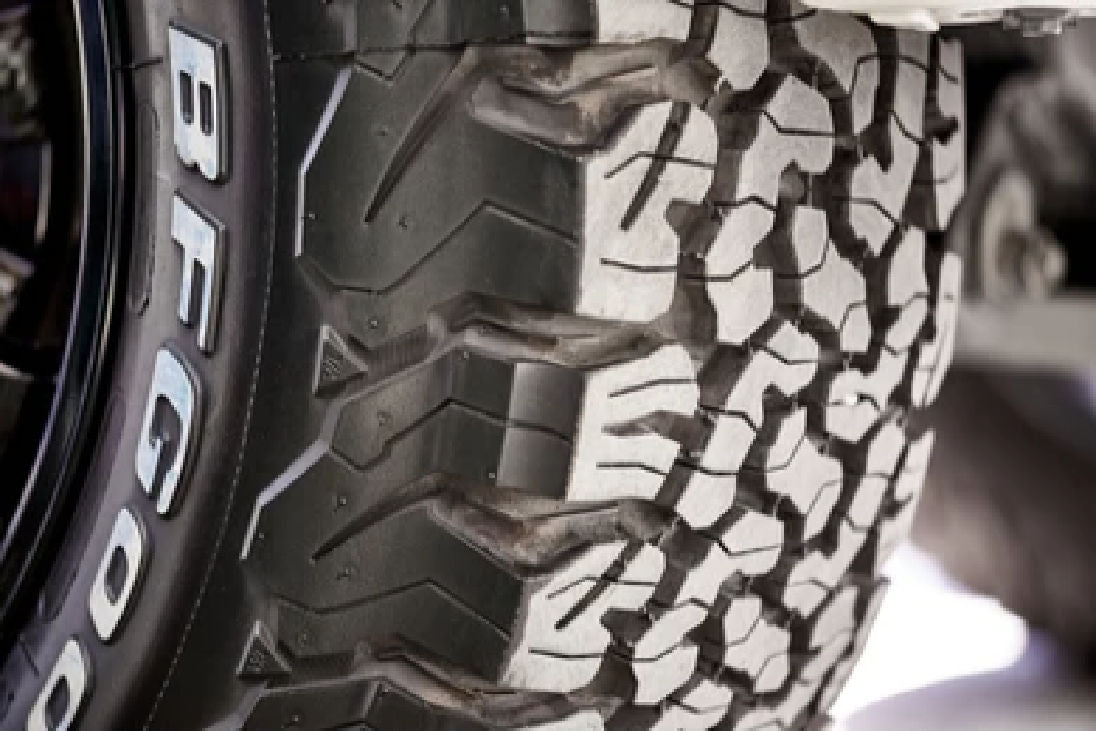Understanding the Information on Off-Road Tire Sidewalls

If you're new to off-roading, or even if you aren't, you may not be aware of the differences between regular vehicle tires and off-road tires. Of course, there are obvious visual differences, but the codes imprinted on off-road tire sidewalls may not mean what you might think it does. Off-road tire sidewalls have some unique information. It's important to understand these codes in case you need a replacement. So, just how do you read tire sizes and specifications?
First of all, off-roading tires are described by their outer diameter in inches. This is important when trying to see what size will fit within your vehicle's wheel wells. That clearance measurement is important to understand so that you don't purchase tires that are so large that they may rub against wheel well liners, fenders or control arms. If you're not lifting your vehicle, your owner's manual or dealership should provide the measurement needed for tire clearance. A lift kit will provide a few inches of clearance, but this varies with the vehicle.
Some off-road enthusiasts go at this a bit backward, trying to find out how much lift is needed to accommodate a particular size tire they want. Articles are available online related to specific vehicles to help you get the information you need.
The sizes of off-road tires are usually listed in the common tire format, such as 235/75R15. This would mean that the section width is 235 millimeters, the 75 is the tire height/sidewall profile expressed as a percentage of the tire width, and the 15 stands for the wheel diameter in inches. The R stands for radial construction.
Sometimes on the internet, you'll come across off-road tire diameters listed in fractions, such as 31.8x10.8. This is done as part of a conversion from millimeters. However, many off-road tire dealers simplify this for vehicle owners, listing the tire sizes only in whole numbers to take out some confusion.
Off-road tires usually contain a prefix or suffix to these numbers as letters, such as LT for light truck. This indicates a heavier-than-normal load capacity and more durable tire construction.
Flotation tires are often installed on off-road vehicles. They are designed to sort of "float" over sandy or loose substrates, lessening the chances of getting stuck. Instead of millimeters, these sizes are listed in inches. For instance, a tire listed as 37x12.5R17 will be 37 inches in diameter with a tire width of 12-1/2 inches and the 17 as the wheel diameter.
Off-road tire sidewalls will also usually list a load range as a letter from B to F, commonly located near the tire size. The higher the letter, the stronger the tire. Most off-road tires will be listed as D to F. The letters also refer to the tires' plies, with the higher letters indicating more plies. All off-road tires are also rated as M+S, standing for mud and snow.

Of course, your true off-road tires will have their prominent tread blocks extending down over the sidewalls to help keep a grip on the terrain. This characteristic is unique to off-road tires, so if you're looking at tires, you can be sure of getting ones truly meant for off-road use.
One drawback of off-road tires is that they have a shorter tread life. Manufacturing processes for these tires utilize a softer rubber compound. This gives the tires a greater grip on all kinds of off-road surfaces. You can expect to get around 40,000 miles from an off-road tire, with some models touting their average as being up to 70,000 miles. This doesn't mean that your tires won't last for a long time period, as you won't be using them for everyday driving. In fact, because off-road tires have a reduced contact patch area, they have less contact with a road surface at any one time. This means that your truck will have less tire grip and will be noisier, along with a noticeable lessening of fuel economy, so they are less than ideal for driving to work and back.
If you happen to be in the South Florida area and need some off-road tires or other parts, why not visit the largest auto parts warehouse in Florida? We offer a large selection of aftermarket auto parts and accessories, along with everything the off-roader needs. If you can't visit in person, you can order from our website. We even offer next-day delivery to Broward, Miami-Dade and Palm Beach counties. We can help you with what you need, along with knowledgeable advice.

